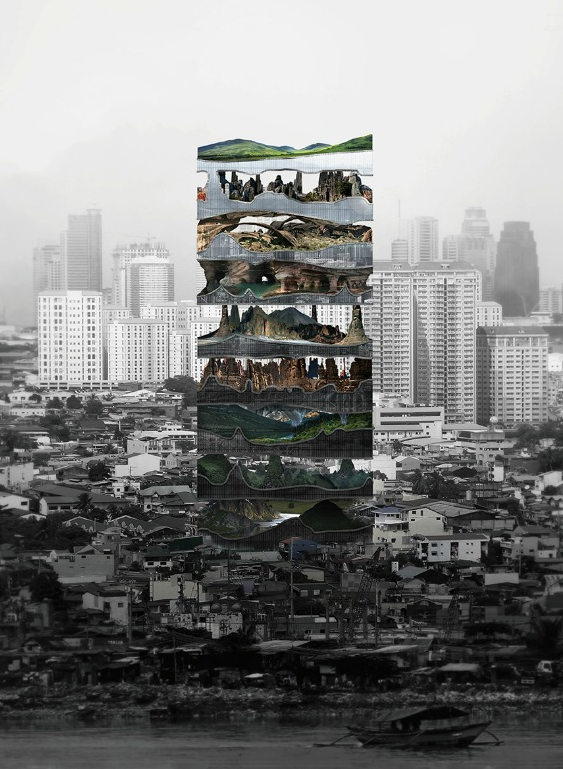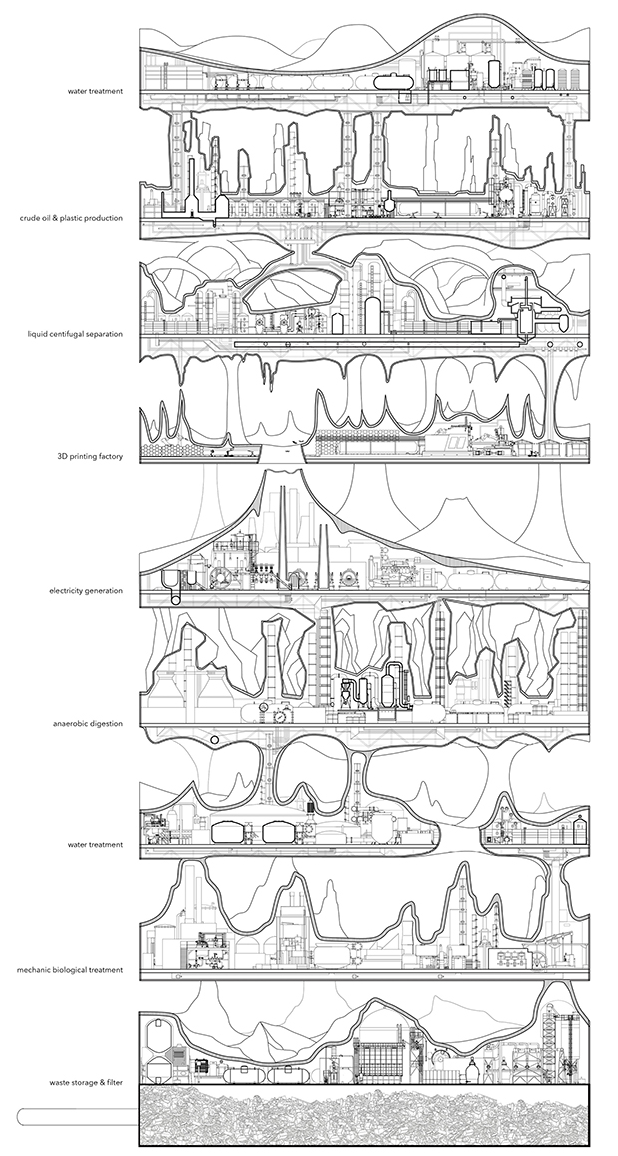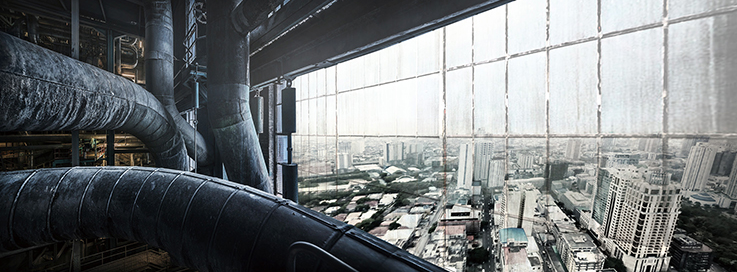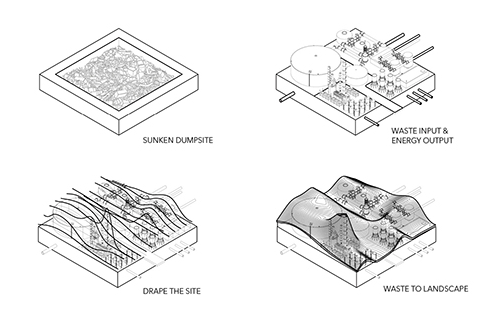This vertical factory designed by architecture graduates Tianshi Liu and Linshen Xie of the U.S. was inspired by the rapidly-growing city of Manila, where urbanisation is spawning new industries and even more pollution. The vertical factory would ensure green growth by transforming the city’s organic waste into water, fertiliser, heat and electricity.
The futuristic proposal investigates the benefits of moving factories back to urban areas. Using metropolitan Manila as an example, the designs detail how redesigning and relocating high-rise factories into the capital region would address issues including waste management, drainage and flooding, and reuse of organic waste to create resources.
Instead of being cast away to rural areas, these vertical factories of the future would be self-sustaining environments where the recreational layers would feed off the waste and resources of the factories. The buildings would therefore actively contribute to the environment of the megacities, emitting zero CO2 emissions, improving local energy efficiency, and providing a higher quality of life for factory workers.
A Self-Sustaining Ecosystem
Due to Manila’s large population, a great amount of organic waste is produced daily through the city. This waste will represent the resource of the new vertical factory.
All waste will be dumped at the bottom level of the factory, then it will be transformed into valuable products such as water, heat and electricity. The landscape is shaped according to the scale of the factories.
Organic waste can then be turned into new city landscape while factories hide beyond natural surface.
The concept’s design is to "let people be aware of the truth" – that the natural environment is a loop, and that everything people produce will form part of the new world.

Instead of criticising pollution problems, the designers propose the most ideal way for people to understand the best interaction between humans and nature.
Currently, the Metro Manila Development Authority is searching for alternative locations for its dumpsites – inadequate collection vehicles and a lack of disposal sites has led to the reduction of collection efficiency of Manila’s household waste (World Bank, 2011).
Metro Manila’s dumpsite problem will not end until local governments can reduce their garbage output as mandated by the Republic Act 9003 (Cayetano, 2008).

Manila’s poor drainage systems and garbage overflow may have worsened the effects of the heavy downpour that ‘Ondoy’ brought to the region.
Why We Need To Bring Factories Back To The City
By 2025, the number of megacities (incl. populations over 10 million) will grow from 23 to 26, and the population in the world’s top 600 cities will increase by 500 million. Two thirds of the world’s population will live in megacities.

Traditionally factories were moved to the outer city because they were noisy and polluting. But now, many factories are cleaner and could have a new place in an urban environment.
Why These Proposals Are Important
Moving factories back to urban centres would provide higher quality of life for workers by allowing employees to walk to work rather than commuting in cars. Urban factories would be closer to skilled workers’ homes, suppliers headquarters and research centres.

Factories would be dissolved into small pieces and be stacked together in high rise vertical factories. By bringing factories back to urban centres, we can achieve zero co2 emissions, be energy efficient resource efficient and promote a higher quality of life.
How Much Waste Does Manila Actually Produce?
Manila is the world's most densely populated city with 42,857 people per square kilometre, or 111,002 people per square mile. The Metro Manila population is estimated at 12 million but the larger urban area has a population estimated at 21.3 million. The Metro Manila population swells during the daytime, however, to about 15 million. This density is much higher than that of Mumbai (23,000 people/sq km), Paris (20,150 people/sq km), and Tokyo (10,100 people/sq km).
Ruled by Americans, Spaniards, and the Japanese for hundreds of years, a real plan has never been made for the region's expansion. In fact, it was planned for a population of just 800,000 in 1905. Since its founding in 1571, Manila has struggled with crime, overpopulation and pollution.
Five Metro Manila cities—Makati, Muntinlupa, Pasig, Quezon City, and Valenzuela—generate 861,967 tons of waste per year, according to a study conducted by the Asian Development Bank in 2003.

A recent study conducted by the Department of Health in co-operation with the World Health Organization's Western Pacific Regional Office showed that the air people breathe in Metro Manila contains pollutants in excess of tolerable levels. The majority of victims are children.
The Environmental Management Bureau of the Department of Environment and Natural Resources says that, over the years, increasing levels of air pollutants from natural and human-related sources have led to poor air quality.
The World Health Organization (WHO), meanwhile, reports that in 2012 around seven million people died - one in eight of total global deaths - as a result of air pollution exposure.












